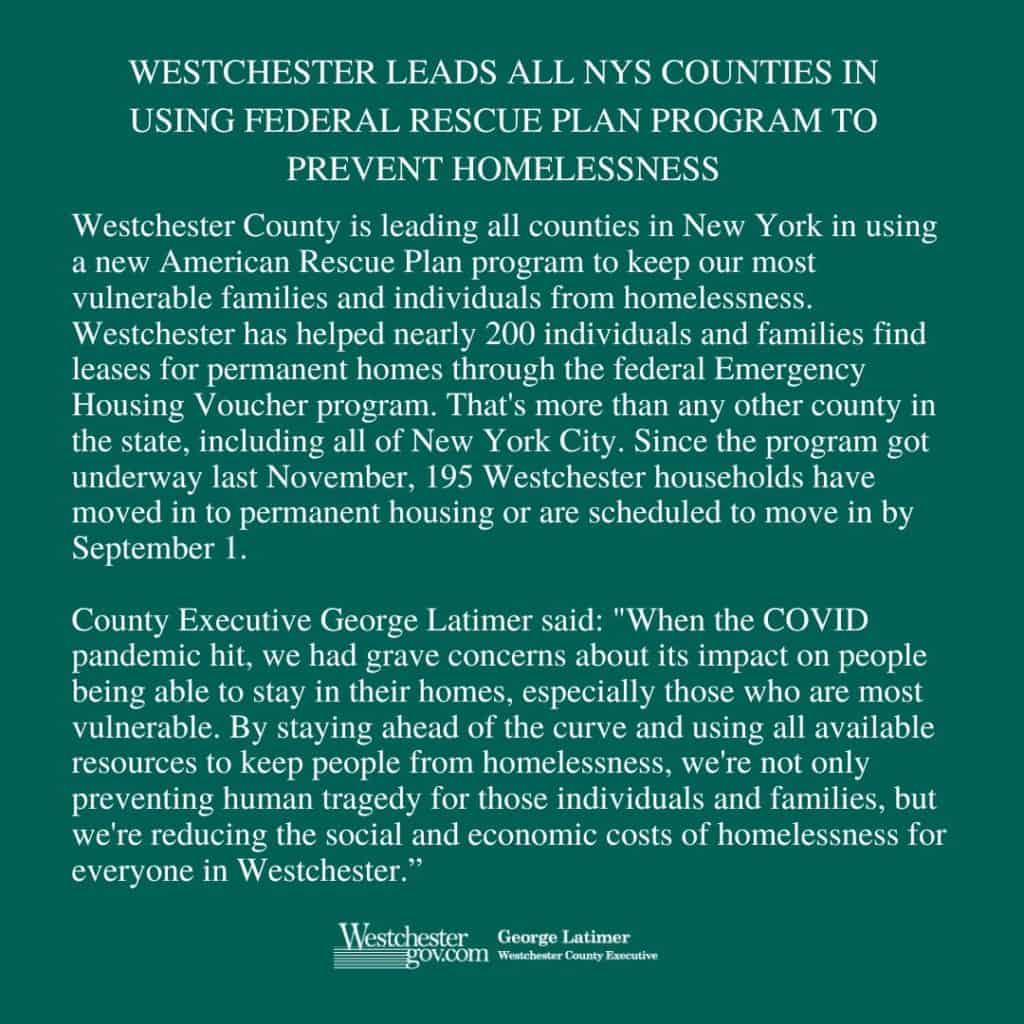
With more than one million people collectively calling Westchester County home, County Executive George Latimer is proving his commitment to the availability and opportunity for affordable housing. Since the start of Latimer’s administration in 2018, more than 4,700 affordable housing units have been built, went under construction or are in the pipeline. Through new construction and redevelopment, homes to buy or apartments to rent, and a designated number of affordable units for seniors, Latimer is ensuring affordable housing is available to everyone, in nearly every town and village in Westchester.
Latimer said: “We want Westchester County to be home to anyone who wishes to join us here, and providing affordable housing opportunities is a big part of that. In County government, it is our job to make sure that housing is available, that it is fair and accessible to everyone, and that it is at a price point that everyone can afford. This is about filling a critical need that people have, and we are helping Westchester’s families when we can get them into decent housing that they can afford.”
Latimer has allocated millions of dollars in the budget each year to develop and rehabilitate affordable housing units. A combined total of $50M that was allocated in the 2022 Capital Budget represents the largest single year commitment to affordable housing in the County’s history.
Latimer also recently reviewed the efforts that Westchester County government has made to prevent homelessness.
Westchester County is leading all counties in New York in using a new American Rescue Plan program to keep our most vulnerable families and individuals from homelessness. Westchester has helped nearly 200 individuals and families find leases for permanent homes through the federal Emergency Housing Voucher program. That’s more than any other county in the state, including all of New York City. Since the program got underway last November, 195 Westchester households have moved in to permanent housing or are scheduled to move in by September 1.
County Executive George Latimer said: ” When the COVID pandemic hit, we had grave concerns about its impact on people being able to stay in their homes, especially those who are most vulnerable. By staying ahead of the curve and using all available resources to keep people from homelessness, we’re not only preventing human tragedy for those individuals and families, but we’re reducing the social and economic costs of homelessness for everyone in Westchester.”
Westchester’s success is a result of diligent advanced planning by the County’s Department of Social Services and the County’s partner in the program, Westhab. And the County’s proactive response to processing applications has put Westchester in a position to help even more people than anticipated as additional federal application slots become available. There are currently 76 additional referrals completed on the waitlist just in case more applications become available.
Department of Social Services Commissioner Leonard G. Townes said: “When we got word that this program was being discussed in Congress, we didn’t wait. Even before it was passed we had selected a partner, began developing criteria for those who might qualify, and worked to identify people who could be helped by the program as well as landlords who would be interested in leases. When final approvals came, we were able to hit the ground running. This is a program that focuses on people most at risk of homelessness and in need of safe, stable homes like domestic violence survivors. For them, time is of the essence, and so it was for us as well.”
Latimer said: “In the end, government programs are only as good as our ability to execute on them. I want to thank Commissioner Townes and the staff at DSS and Westhab for their example of proactive leadership in leveraging federal funds to help County residents most in need of help.”
The Emergency Housing Voucher (EHV) program is available through the American Rescue Plan Act (ARPA). It focuses on individuals and families who are homeless, at-risk of homelessness, fleeing, or attempting to flee, domestic violence, dating violence, sexual assault, stalking, or human trafficking, or were recently homeless or have a high risk of housing instability. Participants live in housing of their choice while paying approximately 30 percent of their monthly income on rent. The remaining rent is paid directly to landlords through the voucher program, which protects landlords by ensuring payment of that portion of the rent.





